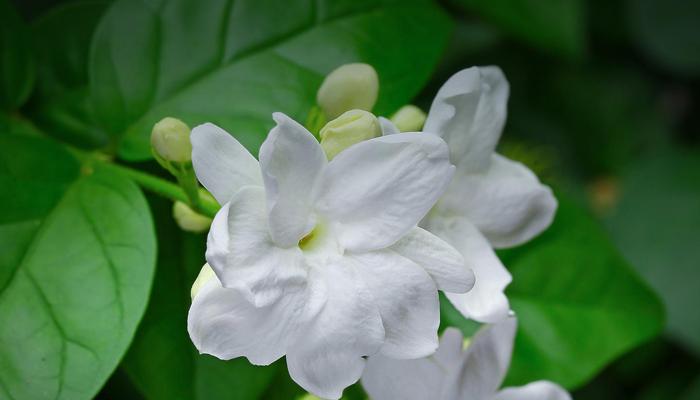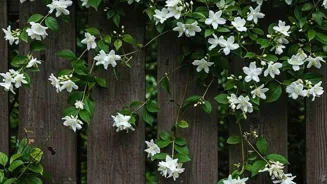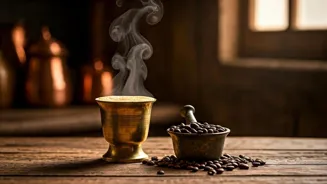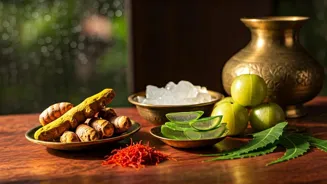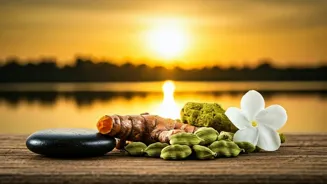Discover 7 Exotic Indian Jasmine Plants to Elevate Your Garden Instantly! Dive into the world of fragrant blossoms!
Namaste, garden lovers! Are you looking to add a touch of fragrance and beauty to your
home garden? Look no further than the exquisite world of Indian jasmine!
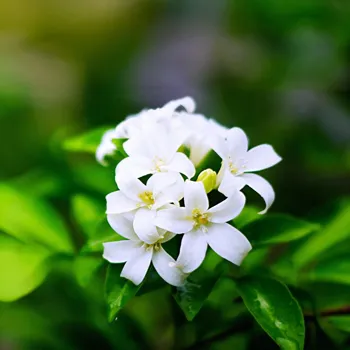
These flowering plants, known as "mogra" in many parts of India, are not only visually appealing but also fill the air with their intoxicating scent. Jasmine is a staple in Indian culture, used in religious ceremonies, perfumes, and of course, adorning the hair of women.
Growing jasmine is easier than you might think, and with a little care, you can transform your garden into a fragrant paradise. In this article, we'll explore seven exotic Indian jasmine varieties that will instantly elevate the look and feel of your outdoor space.
Get ready to discover the jasmine that speaks to your soul and garden goals! It is a really good way of planting flowers, which make feel refreshed. So go ahead and enrich your knowledge.
Jasminum sambac, known as Mogra, a beloved jasmine in India with fragrant white flowers
First up, we have the Jasminum sambac, commonly known as "Mogra" or Arabian Jasmine. This variety is perhaps the most well-known and loved jasmine in India. It's renowned for its intensely fragrant, pure white flowers that bloom throughout the year, especially during the warmer months.
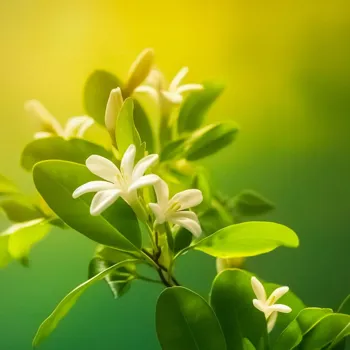
Mogra flowers are traditionally used in making garlands, perfumes, and even flavoring tea. To grow Mogra successfully, ensure it receives at least 6-8 hours of sunlight daily. The soil should be well-draining and rich in organic matter.
Regular watering is essential, especially during dry spells, but avoid overwatering to prevent root rot. Pruning after flowering encourages new growth and more blooms. The enchanting waft of Mogra is reminiscent of temple visits and festive occasions, a truly Indian experience.
Make sure you check the plant regularly for any diseases or insects. Early treatment will keep your plant healthy for a long time.
Chameli, a fragrant climber adored for romance, thrives in sunlight
Next on our list is the Jasminum grandiflorum, also called "Chameli" or Spanish Jasmine. Chameli is celebrated for its delicate, star-shaped white flowers that exude a sweet, floral fragrance. Unlike Mogra, Chameli is a climber, making it perfect for adorning walls, fences, or pergolas.
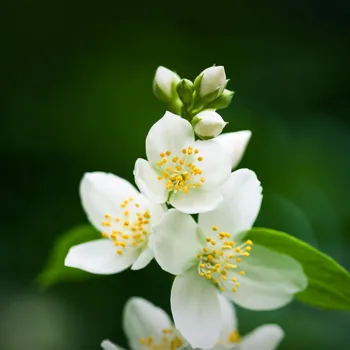
It's a relatively low-maintenance plant that thrives in full sun to partial shade. Well-drained soil and regular watering are key to its growth. Chameli's fragrance is often associated with romance and is a popular ingredient in perfumes and aromatherapy.
In Ayurveda, it is valued for its calming and therapeutic properties. Imagine sitting in your garden, sipping chai, with the gentle fragrance of Chameli surrounding you – pure bliss! Use organic fertilizer to keep the plant healthy and promote flowering.
Also, don't forget to provide support for the climber to grow upwards.
Jasminum multiflorum, or Star Jasmine, blooms white star-shaped flowers, ideal for small gardens
Our third fragrant treasure is Jasminum multiflorum, known as "Kunda" or Star Jasmine. What sets Kunda apart is its clusters of small, white, star-shaped flowers that bloom profusely, creating a stunning visual display. It's a relatively compact shrub, making it suitable for pots and small gardens.
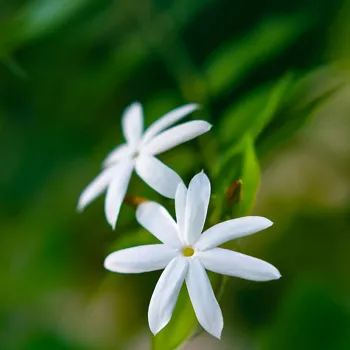
Kunda prefers full sun and well-drained soil. Regular pruning helps maintain its shape and encourages more blooms. In some cultures, Kunda flowers are used in religious offerings and auspicious ceremonies. Their delicate beauty and subtle fragrance make them a delightful addition to any garden.
This jasmine needs regular watering, especially during the summer months. Keep an eye out for pests like aphids, which can be easily controlled with neem oil. Kunda’s small size makes it easy to maintain.
Juhi, a fragrant jasmine in India, thrives in sun, used in garlands, perfumes, with calming scent
Moving on, we have Jasminum auriculatum, or "Juhi." Juhi is another popular jasmine variety in India, known for its highly fragrant, small, white flowers that bloom in clusters. It's a versatile plant that can be grown as a shrub or a climber.
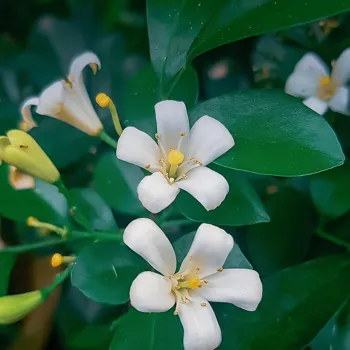
Juhi thrives in full sun to partial shade and requires well-drained soil. Regular watering and fertilization will promote healthy growth and abundant flowering. Juhi flowers are often used in making garlands and perfumes, and their fragrance is believed to have a calming effect on the mind.
The scent of Juhi is commonly used in perfumes. It's a perfect addition to meditation gardens or relaxation spaces. Prune the plant regularly to maintain its shape and encourage new growth. This variety is known for its adaptability and can tolerate a range of soil conditions.
Italian Jasmine: Yellow trumpet-shaped flowers brighten gardens in winter
Next, let’s explore Jasminum humile, also called Italian Jasmine or Yellow Jasmine. Unlike its white-flowered cousins, this variety boasts bright yellow, trumpet-shaped flowers that add a splash of color to the garden. It's a hardy, semi-evergreen shrub that can tolerate colder temperatures.
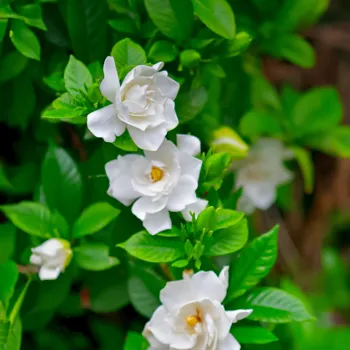
Italian Jasmine prefers full sun to partial shade and well-drained soil. It's relatively low-maintenance and requires minimal pruning. While its fragrance is less intense than other jasmine varieties, its vibrant color makes it a standout feature in any landscape.
This jasmine is a great choice for adding visual interest to your garden, especially during the winter months when other plants may be dormant. Mulching around the base of the plant helps retain moisture and suppress weeds. Italian Jasmine is a resilient plant that can withstand harsh conditions.
Highlighting Lemon-Scented Jasmine, a fragrant climber ideal for gardens
Last but not least, we highlight Jasminum azoricum, often known as Lemon-Scented Jasmine. As the name suggests, this jasmine variety has a refreshing lemon-like fragrance that differentiates it from other jasmines.
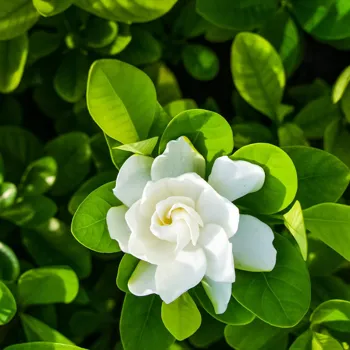
Its white, star-shaped flowers bloom in clusters and are highly fragrant, especially in the evening. Lemon-Scented Jasmine is a vigorous climber, making it ideal for covering walls, fences, or trellises. It thrives in full sun to partial shade and requires well-drained soil.
Regular pruning will help maintain its shape and encourage more flowering. The zesty fragrance of this jasmine is perfect for creating a vibrant and inviting atmosphere in your garden. This jasmine is relatively pest-resistant and easy to care for.
Consider planting it near seating areas to fully enjoy its refreshing fragrance. Make sure you water the plant regularly to keep it healthy and vibrant.
Explore diverse Indian jasmine plants for a fragrant garden oasis
In conclusion, these seven exotic Indian jasmine plants offer a variety of fragrances, colors, and growth habits to suit any garden. From the intensely fragrant Mogra to the vibrant Yellow Jasmine, each variety brings its own unique charm and beauty.
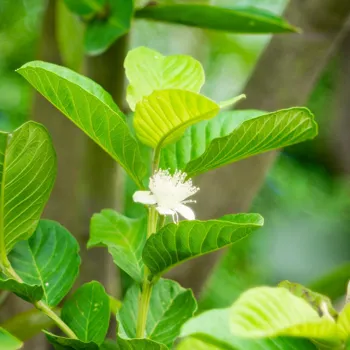
With a little care and attention, you can transform your garden into a fragrant oasis that delights the senses and enhances your well-being. So, which jasmine will you choose to add to your garden first? Happy gardening! With diverse options to choose from.
You can create a garden that are a reflection of your distinct taste. Enjoy the process of creating your outdoor haven.
AI Generated Content. Glance/InMobi shall have no liability for the content